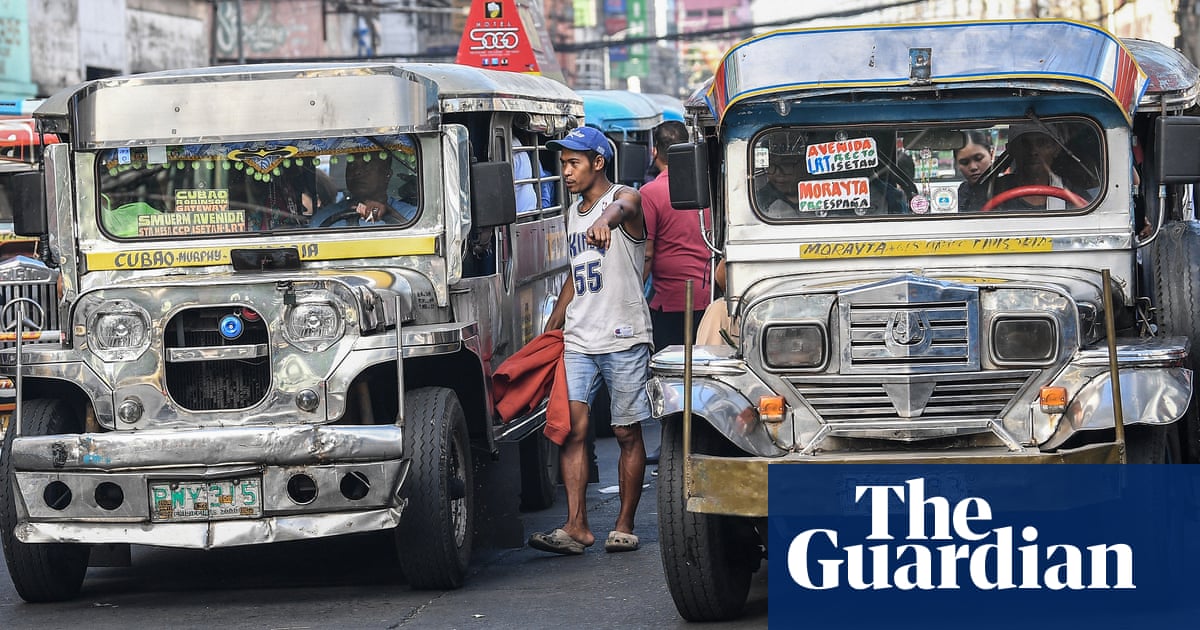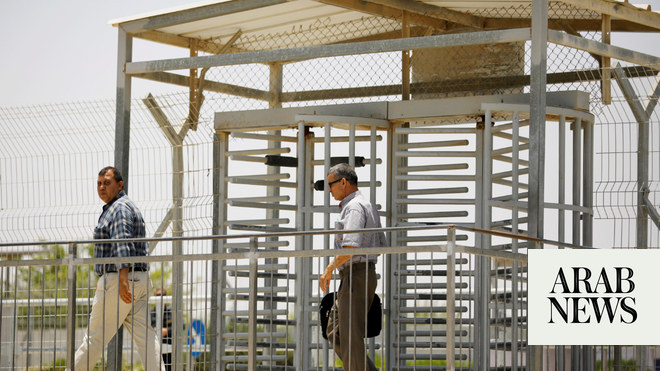
A three-day strike by drivers of jeepneys in the Philippines began on Monday as transport groups warned that thousands could be pushed off the roads by government modernisation plans.
The jeepney is the backbone of the Philippines’ transport system. The customised, privately-owned buses, which look like a cross between a Jeep and a van and are decorated in flamboyant colours, ply routes in neighbourhood streets and city centres, offering rides for as little as 13 pesos (23 US cents). They have featured in pop songs and films – Pope Francis even travelled through Manila in a jeepney-inspired popemobile.
The government has for years wanted to modernise the vehicles, which were originally built from repurposed US army Jeeps left over from the second world war, and are known to chug out pollutants.
Operators – who own the jeepneys – and drivers have been told by the government that they must join corporations or cooperatives by Tuesday, and gradually replace their jeepneys with more environmentally friendly vehicles that have more safety features.
The government has said it will subsidise the new vehicles, and that cooperatives will be able to access bank loans. It also says that jeepneys will not be immediately withdrawn.
Operators, however, say the new vehicles are completely unaffordable and that they will be burdened with huge amounts of debt.
“As a small-time operator, we can’t afford the expensive modernised Jeep they want us to have,” says Almira Molina, who has two jeepneys.
The new vehicles will be fitted with engines that meet European emission standards, or electric motors, and will have wifi, CCTV and air conditioning. But the vehicles, along with admission into a cooperative, will cost up to 2.8m pesos ($48,500) – far more than a traditional jeepney, which is usually priced between 150,000 to 250,000 pesos.
There are about 179,000 jeepneys – the vast majority of which are at least 15 years old – and the transport group Piston says thousands of drivers and operators are at risk of losing their livelihoods.
“Why do they want to erase this? It’s a big question for everyone,” said Ed Sarao, of jeepney maker Sarao Motors, whose father, Leornardo, was a pioneer of the jeepney.
The vehicle was built, he says, “from the ashes of World War II”.
Every jeepney is custom-made, and has its own unique designs – artwork can feature anything from the Virgin Mary, to basketball stars and images of agriculture or cartoon characters. The new minibuses in most cases do not have the same design as a classic jeepney – prompting fears its iconic shape could disappear from the streets.
Groups representing operators and drivers say they are not opposed to change, but that the current government plans will unfairly hit the poorest.
“The problem we see is that with the amount needed to modernise, small operators and jeepney drivers will not be able to afford this programme – and in the end huge corporations may take over the industry,” said Jan Atienza, of Piston, which represents drivers and operators.
Operators worry that if they are unable to keep up with debt repayments, their vehicles could be seized, and drivers left without work.
The government argues that joining cooperatives or corporations will allow jeepney drivers and operators to pool resources, be more efficient, and get better access to finance. It says vehicles will be upgraded gradually, over a period of between five and eight years, and that this process will improve environmental standards and make the roads safer.
Veteran jeepney driver Oscar Soria, 54, said his operator, who owns the vehicle he drives, has joined the government’s programme but he has yet to feel an impact.
“I don’t think the electric jeepneys will last long,” he said.
Given the choice, he said he would rather continue driving a traditional jeepney, and wants these vehicles to instead be renovated. “Because passengers are used to this kind of Jeep. And the fare is a little cheaper. Of course, the fare will increase when the modern jeepneys will be operational,” he said.
Gina Gatarin, a researcher specialising in Philippine transport systems, said that past research into transport reforms in other Asian or African cities showed that such programmes were unlikely to succeed if they were pushed in a top-down manner.
“It’s very important that we create a transport sector which is less polluting and more safe for everyone, but it should not be at the expense of these poor drivers being pushed out of the labour force,” Gatarin said.
Jeepneys, which account for 40% of all motorised trips in the country, are the most affordable way for people to get around, at a time when many are already facing increases in the cost of food and other essentials.
The strike will last until the end of Wednesday. The government has said previous strikes have been limited in their impact.











